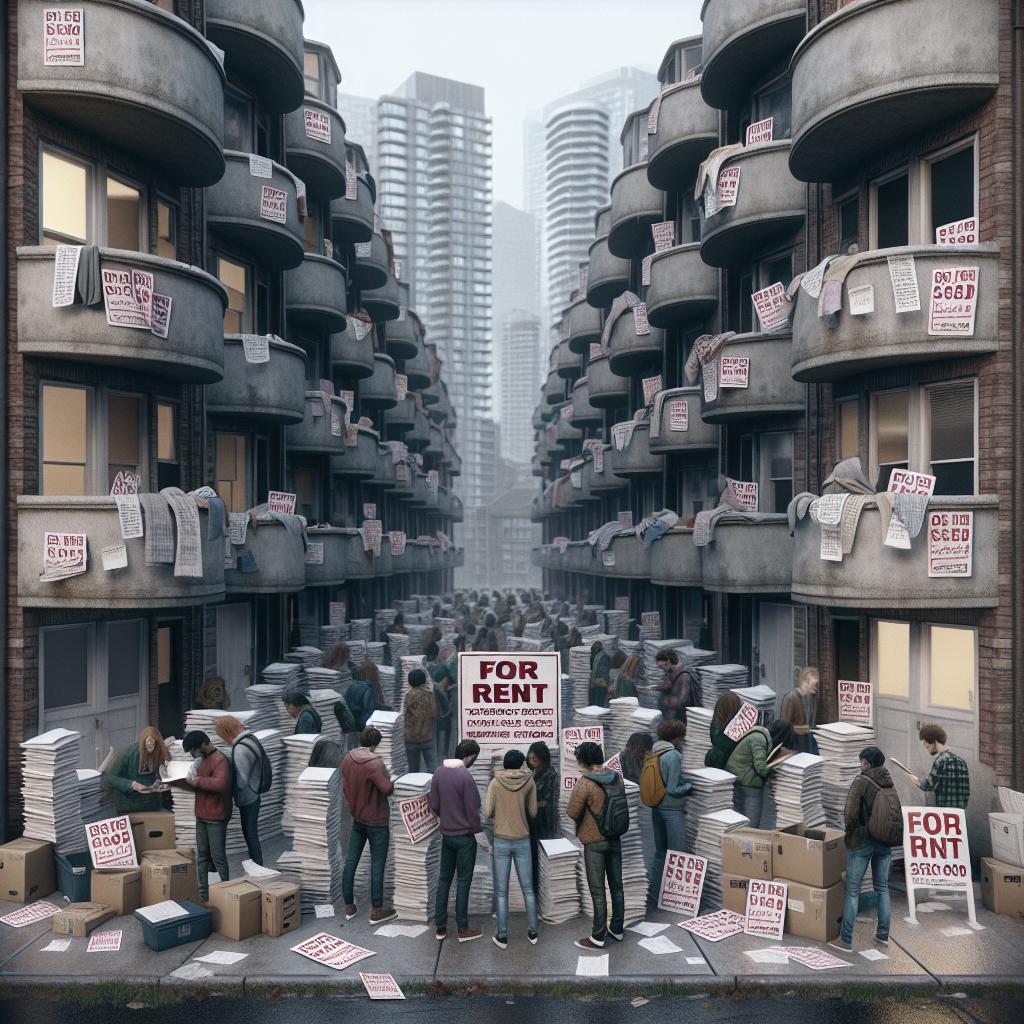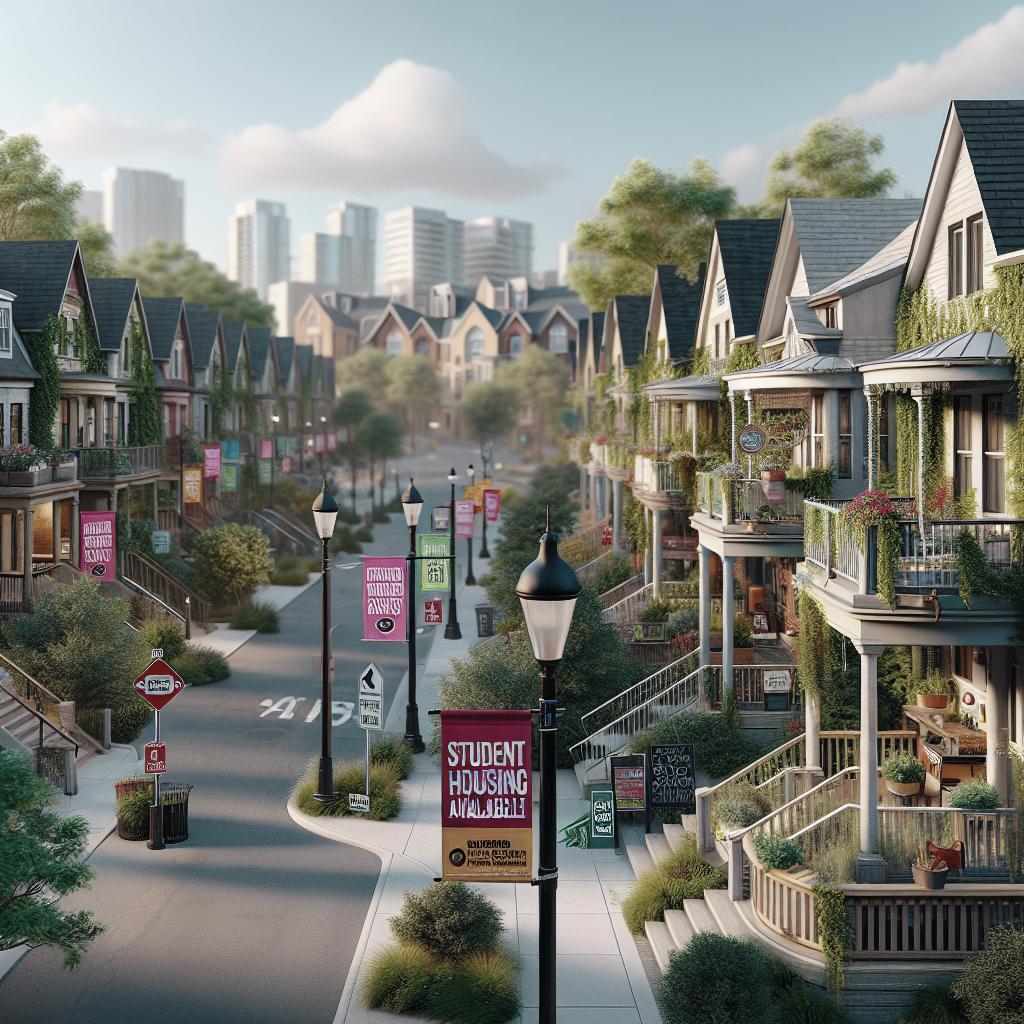“`html
Common Issues Students Face in Toronto Housing
As one of the fastest-growing cities in North America and home to several world-renowned universities, Toronto faces a significant challenge: providing adequate housing for its student population. This blog post dives into the common issues students encounter while seeking accommodation in Toronto. We will explore the shortage of housing, the role of purpose-built accommodations, municipal approval challenges, and the collaborative efforts needed to address these problems. Through this examination, we aim to shed light on the current housing dynamics and offer insights into potential reforms that could alleviate the student housing crisis in this bustling Canadian metropolis.
The magnitude of the student housing shortfall
Toronto’s student housing shortfall is a pressing issue, exacerbated by the city’s burgeoning population and increasing demand for higher education. With limited on-campus housing and the high cost of living in the city, students often find themselves in a precarious situation. The scarcity of affordable accommodation forces many to resort to makeshift living arrangements, such as overcrowded apartments or long commutes from areas outside the city limits.
The root of the problem lies in the lack of adequate housing supply to meet the growing demand. This disparity between supply and demand not only drives up rental prices but also creates an environment where quality is often compromised for affordability. Students frequently encounter issues with substandard living conditions, including poorly maintained properties and inadequate facilities, which further exacerbate their housing woes.
The role of purpose-built student accommodations
Purpose-built student accommodations (PBSAs) have emerged as a potential solution to the housing crisis in Toronto. These developments are designed specifically to cater to the needs of students, offering amenities that traditional housing options often lack. From communal study areas to social spaces and fitness centers, PBSAs provide a holistic living experience tailored to student life.
Despite their potential, the growth of PBSAs in Toronto has been sluggish. High construction costs, zoning regulations, and neighborhood opposition are just a few of the barriers developers face when attempting to address the student housing shortage through this avenue. Additionally, while PBSAs aim to provide affordable housing, their pricing often remains inaccessible to many students due to the substantial investments required to create these facilities.
Student housing in Ontario amid ongoing municipal approval challenges
Municipal approval challenges present another significant hurdle in the provision of student housing in Ontario. Despite the urgent need for more student accommodations, many proposed projects are stalled or denied due to the intricate and lengthy approval processes. Zoning laws, community pushback, and environmental considerations significantly impact the pace and scale at which new housing projects can be developed.
These bureaucratic obstacles not only delay the relief that students desperately need but also dissuade potential investors from financing new housing projects. The result is a stagnant housing market that struggles to keep up with demand, leaving students with few viable options. Streamlining these processes and addressing community concerns through transparent communication and negotiations are crucial steps toward fostering a more conducive environment for developing student housing.
The way forward: Collaborative efforts and policy reform
Solving the student housing crisis in Toronto demands a collaborative effort from various stakeholders, including educational institutions, government bodies, and private developers. By working together, these groups can pool resources and expertise to create innovative solutions that meet the housing needs of students effectively.
Policy reform plays a pivotal role in addressing the housing shortfall. Adjustments to zoning laws, incentives for developers, and increased funding for affordable housing are just a few measures that could encourage the growth of student accommodations. Additionally, universities and colleges could explore public-private partnerships to expand on-campus housing options and provide students with more secure and convenient living arrangements.
Enjoying this article?
If you find this analysis of Toronto’s student housing challenges insightful, be sure to share it with fellow students and colleagues. Follow our blog for more articles on urban development, student life, and housing solutions.
Success!
Understanding the nuances of housing challenges for students in Toronto is the first step towards achieving lasting solutions. With increased awareness and action from all stakeholders, a brighter, more sustainable future for student living in Toronto is within reach.
Submit a Comment Cancel reply
Your email address will not be published. Required fields are marked *
Lessons learned
| Issue | Description |
|---|---|
| Student Housing Shortfall | High demand and limited supply lead to inflated costs and substandard living conditions. |
| Purpose-built Student Accommodations | PBSAs offer potential solutions but face challenges like high costs and regulatory hurdles. |
| Municipal Approval Challenges | Bureaucratic processes delay housing projects and deter investment, slowing development. |
| Collaborative Efforts & Policy Reform | Collaboration and policy adjustments are crucial for developing viable student housing solutions. |
“`


